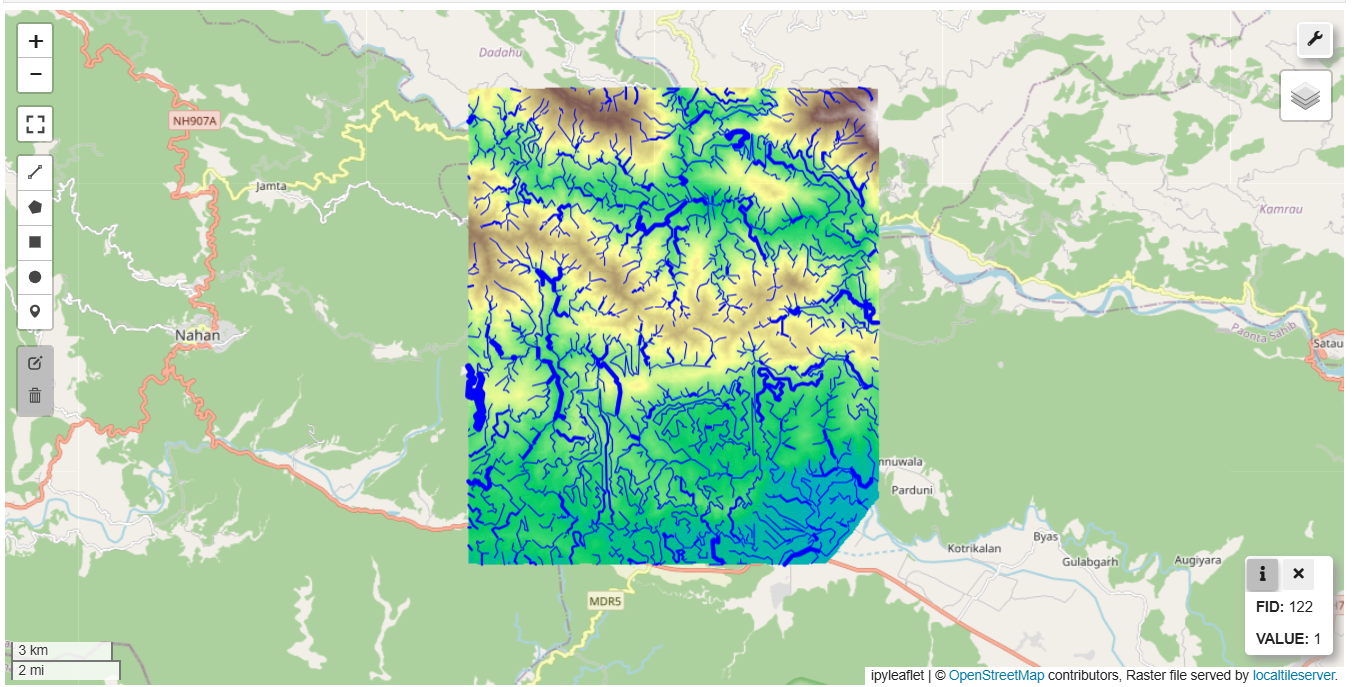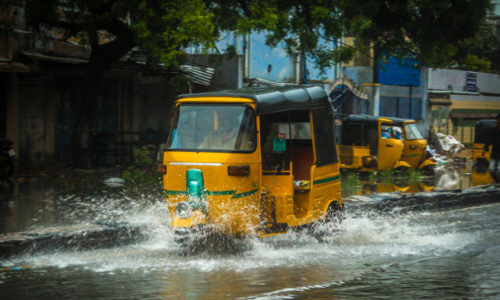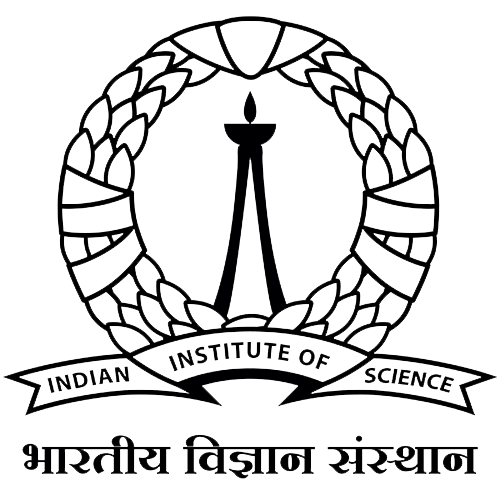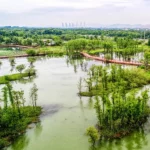Natural drains act as channels that collect and transport surface water, influencing ecosystems. Mapping these natural drains is essential for understanding the flow of water across a landscape, which has wide-ranging applications in water resource management, flood risk assessment, and environmental protection. To generate natural drains, contour data available for Sirmaur, Himachal Pradesh in the GDI platform was used. Contours represent lines of equal elevation and serve as the foundation for creating a detailed topographical model. As an initial step, a continuous surface raster (Digital Elevation Model) was generated from contour using cubic interpolation method.

Once the DEM was created, a series of hydrological analysis tools were applied using the Whitebox Tools python library. The DEM was first processed through a “fill” operation to remove any depressions that are outliers or noise. After this, flow direction analysis was conducted to determine the direction in which water would move across the landscape, followed by basin generation to identify the individual catchment areas. Flow accumulation was then calculated to determine how water converges and flows across the terrain, with areas of high accumulation indicating the presence of natural drains or streams.
To define the stream network, a threshold value was applied to the flow accumulation results, marking the points where enough water has accumulated to form a stream. The Strahler stream ordering method was then used to classify the streams based on their branching complexity, assigning order numbers to different segments of the stream network. Finally, the stream network was converted from raster format to vector format.
The mapped drains have numerous practical applications. It can aid in identifying areas at risk and source of water pollution, as pollutants often travel along these pathways. It also supports biodiversity conservation by highlighting critical watercourses that support various ecosystems. Moreover, understanding natural drainage patterns is crucial for assessing flood risk, as blocked or altered drainage can exacerbate flooding. Additionally, identifying these natural drains can help locate potential groundwater recharge zones, making this technique invaluable for water resource planning and sustainable development.
Related Posts

- CDPG
- November 25, 2021
Bracing to Tackle Urban Flooding With IUDX
Over the years visual imagery around floods in India has undergone a drastic change. Even until ..

- CDPG
- November 25, 2021
Lanes of Hope with IUDX Based Green Corridor for Emergency Vehicles
Year 2014, a 21-year-old in Chennai received the gift of life, thanks to an ambulance being abl ..

- CDPG
- August 1, 2022
Exploring India with IUDX Based Tourist Guide
India is the land of many charms offering tourists a bit of every experience. A kaleidoscope of ..













































































